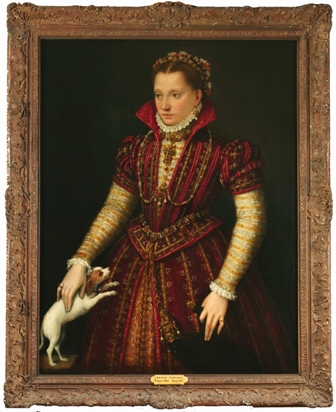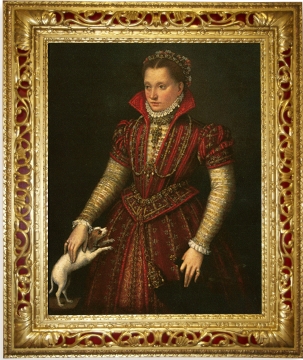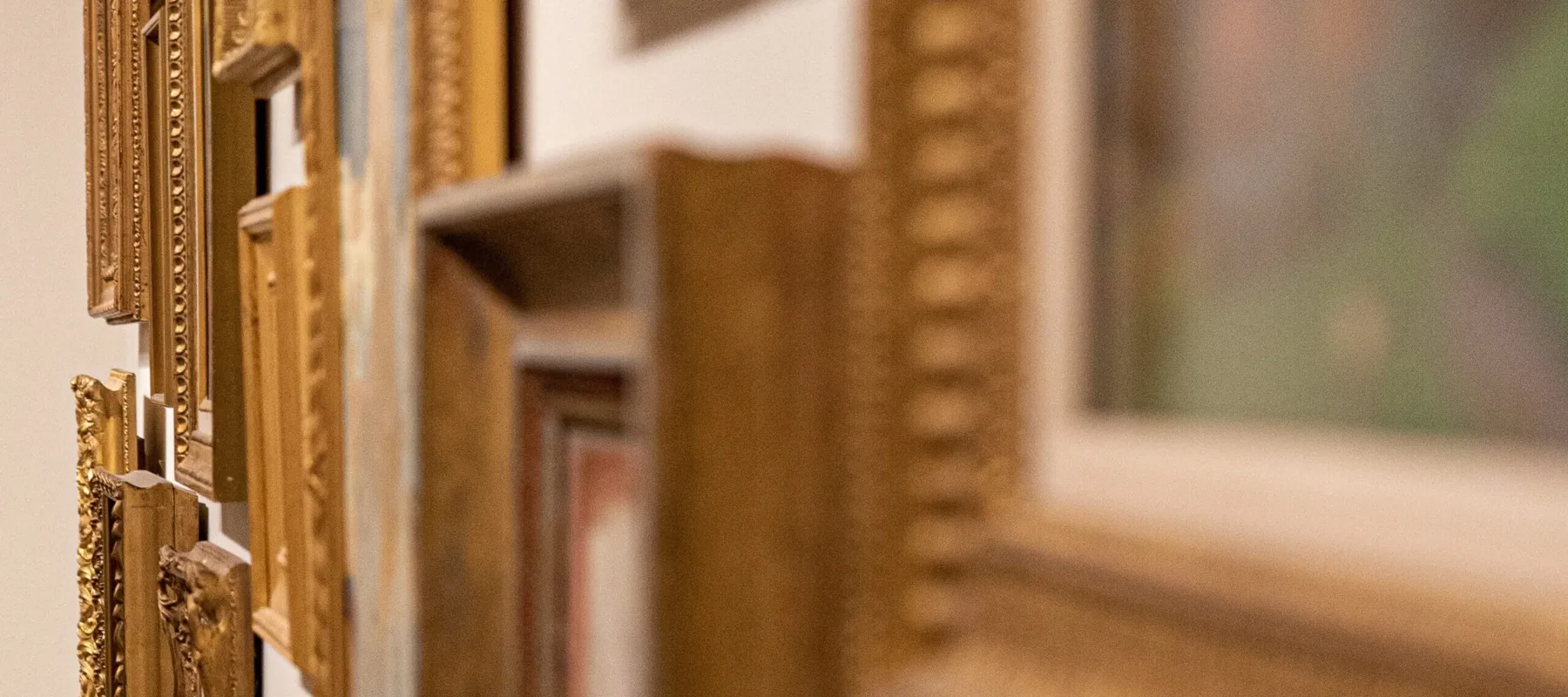Why do people visit art museums? That’s easy: to see art. But all too often when strolling through our favorite galleries, we forget to take notice of those unsung objects that surround and support the hallowed masterpieces that we flock to venerate. I’m talking about frames—they set the tone for, and ultimately, make or break our perception of the works they hold. For example, let’s look at one of NMWA’s most treasured works, Lavinia Fontana, Marriage Portrait of a Bolognese Noblewoman (Livia de’ Medici Bandini?), ca. 1580, by Bolognese artist Lavinia Fontana.

The Artist: Born in 1552 in Bologna, Lavinia Fontana was taught to paint by her father, a prosperous local artist aptly named Prospero. While Lavinia was most likely not allowed to work in her father’s studio among his apprentices, she pursued her training by drawing members of her entourage. By the mid-1580s, her reputation and social connections had attracted a wealthy clientele delighted with her sophisticated portraits. Around 1603, Fontana moved her large family (she had 11 children) to Rome to become a painter for Popes Gregory XIII and Clement VIII. There, she worked on commissions for cardinals, ambassadors and princes, and executed some large-scale altarpieces–a rarity for a woman artist.
The Portrait: As a pre-eminent painter of the Bolognese elite, Lavinia portrayed noble wives, daughters, and widows. Portrait of Noblewoman likely depicts a young bride as suggested by her over-dress of embossed red velvet and satin yellow bodice underneath. Other clues about the young woman’s status include her chaste and disciplined demeanor as well as the curious item hanging from her waist: a bejeweled pelt of a marten. A slender, minklike creature, martens were associated with fertility. Finally, the fashionable and costly lap dog known as “cane Bolognese” (present in many of Fontana’s portraits), was a well-known symbol of a spouse’s fidelity to her husband
The Frame Project: From the time NMWA acquired the Fontana painting in 1986 up until 2007, the work was held in a 19th-century reproduction of an 18th-century French frame. The dark, unattractive moulding was neither from the correct period nor geographically appropriate, and failed to show this painting—considered one of the museum’s “signature” works—to its best advantage. In 2007, the Texas State Committee of the National Museum of Women in the Arts generously offered to fund the creation of a new frame for the painting through NMWA’s Adopt-a-Work program (see below for more information).

Who could NMWA commission to create a frame that could flaunt Fontana’s strokes and colors to their highest potential? None other than Richard Ford, one of Washington, DC’s premier frame conservators and frame scholars from the National Gallery of Art (NGA). From 2008 to 2009, Richard expertly designed and painstakingly hand-crafted a “Titian style” frame for the painting. Its color, size, and style are appropriate to the period of the painting as well as to the proud, local tradition of Bolognese frame production. The wealthiest Italian nobility such as Fontana’s sitter would have expected great craftsmanship in the service of this lovely portrait—an expectation that, we are proud to boast, has finally been met.

The Final Product: Framed by Richard’s masterpiece, Fontana’s masterpiece beams like a new work. The new moulding comprises a raised, hollow, convex ornament accentuated by two rows of smaller, stylized leaf ornaments on the inside. The dramatic red beneath the gilt decoration beautifully complements the color of the noblewoman’s dress, the traditional color of most Bolognese wedding dresses.
Thanks to the generosity of NMWA’s Texas State Committee and the expertise of Richard Ford, the Fontana frame has been returned to its former glory.


